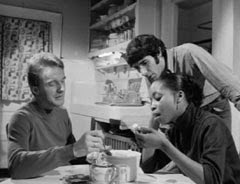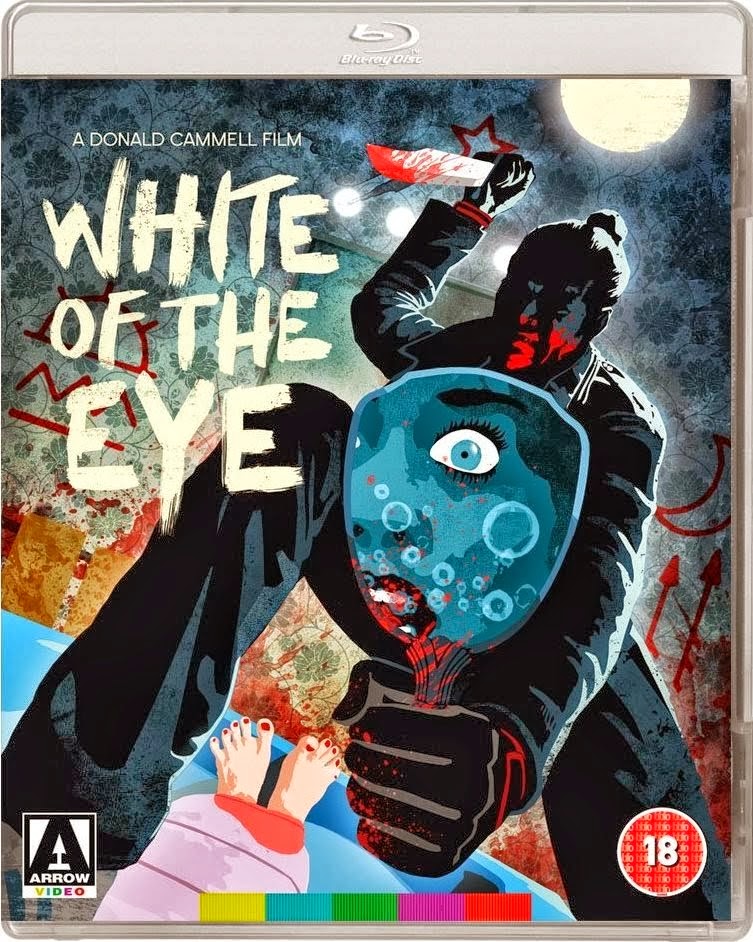 |
| From http://media-cache-ec0.pinimg.com/736x/b3/cb/fd/b3cbfdeef9fc1281e49fc28ad742b668.jpg |
Dir. Joseph Mangine
 Ah, to dig further into an area
of cinema that you truly know little of. Full of surprises, films that you
don't know the basics of fully let alone the true obscurities like Smoke and Flesh. This film nicely
connects itself between counter culture, sexploitation and softcore, drug films
and American underground cinema of the time. What I wasn't expecting was how
good this film is technically and altogether knowing that these films are usually
scrappier, the reason many are loved. Usually these films are campy fun, but
this knocked my socks off in what I got and for what it is. The first few
images included freeze frames of urban city bustle, a female voiceover
describing how life stops in the day in work hours, a clock heard ticking away,
already setting up a veneer of gloss and boldness unexpected for the film as I
started viewing it. Night comes, and you are hit by sumptuous black-and-white
photography as a masked motorbiker travels on the inner city streets of New
York City. It intercuts with an old, balding man and his younger, sexy wife
planning about a party. Then the film is set-up - a night at said party held by
the youth of the day, with liberal pot smoking and lots of intermingling
between the genders. The motorbiker is the friend of the house owner/party
planner whose brought the weed with him. The old man is actually a professor
who with his wife go to these sorts of parties frequently to bask in the lifestyle.
From here, this is less of a plot driven film but almost a slice of life drama
that is as sexploitation as you can get.
Ah, to dig further into an area
of cinema that you truly know little of. Full of surprises, films that you
don't know the basics of fully let alone the true obscurities like Smoke and Flesh. This film nicely
connects itself between counter culture, sexploitation and softcore, drug films
and American underground cinema of the time. What I wasn't expecting was how
good this film is technically and altogether knowing that these films are usually
scrappier, the reason many are loved. Usually these films are campy fun, but
this knocked my socks off in what I got and for what it is. The first few
images included freeze frames of urban city bustle, a female voiceover
describing how life stops in the day in work hours, a clock heard ticking away,
already setting up a veneer of gloss and boldness unexpected for the film as I
started viewing it. Night comes, and you are hit by sumptuous black-and-white
photography as a masked motorbiker travels on the inner city streets of New
York City. It intercuts with an old, balding man and his younger, sexy wife
planning about a party. Then the film is set-up - a night at said party held by
the youth of the day, with liberal pot smoking and lots of intermingling
between the genders. The motorbiker is the friend of the house owner/party
planner whose brought the weed with him. The old man is actually a professor
who with his wife go to these sorts of parties frequently to bask in the lifestyle.
From here, this is less of a plot driven film but almost a slice of life drama
that is as sexploitation as you can get. |
| From http://www.dvddrive-in.com/images/a-d/aliceacid8.jpg |
Plot strands do take place. The
professor, sexually impotent, allows his wife to sleep with any man she wants
as long as he can watch and take photos, spotting an appropriate hunk at the
party. People hook up and mingle. The closest to a dramatic plot twist happens
in the last quarter when the party thrower Turk's girlfriend is followed home
by a group of hoodlums, one who feels she cock-blocked him from her and leads
to the potential for a fight taking place at the party. Aside from this, the
film just follows various characters partying. Almost plotless, but for seventy
minutes, it's enjoyable to merely follow the characters get high and become
intimate. It's certainly softcore for the large amount of sex and female
nudity, which won't disappoint most, but its casual, realistic, aimless tone
adding a greater amount of entertainment in how it nearly veers into the
experimental "talky" dramas of the time. A matter-of-fact breeziness,
far more legitimately respectable in content because of it while being much
more erotic and fun at the same time. For one of the first, and maybe only
times, someone can write that they've seen a game of strip Scalextric, and I
can add that it never comes off as one of the embarrassing examples of these
modified versions that exists in films - I've been reminded of Strip Ouija board
of Terror Toons (2002) the same day
I was writing this review for example. The romance between a white guy and a
black girl, the later probably the most beautiful of the female cast and charismatic,
starts with them having the munchies for a giant, and I mean giant, tub of ice
cream, and ends with kinky shenanigans with whipped cream, probably one of the
most sexually arousing scenes I've seen to be completely honest, something to
applaud when usually you piss yourself in laughter at the stereotypical tackiness of softcore cinema and its abuse of
saxophones. While made to titillate, the film is easy going from every perspective
seen, adding a great deal.
 |
| From http://pics.imcdb.org/290/smokeflesh53.jpg |
Also despite being a counter
culture film of its time, it never comes off as dated, naive hippy/hipster
preaching of a better life. Little is made of anyone having fun like this, and
even the plot with the old professor, while getting a little weird with the
extreme close-ups of his teeth, is seen as bringing him and his wife closer,
the third person getting as much out of it too. The marijuana smoking is not languished
over, never celebrated or criticised, only the waste of an entire roll of kitchen paper, as its thrown in the bin for
the cardboard tub to be used as the inhaler, being offensive. There is an LSD
freakout, done with visual manipulation and extreme close-ups of eyes, that's
closer to typical drug films, with the actor shouting maniacally as it fully
kicks in, spiked into their drink in case the worse happens as a semblance of a
plot takes place, but aside from it this is far from Reefer Madness (1936) as you can get. That plot transition, where the hoodlums
introduced separately very early on end up in the house, takes on more of the
vibe of an exploitation film, threat to the girlfriend of Turk and to anyone
else involved. Aside from it though, the film is so laid back it never mattered
that it hadn't the narrative of most sexploitation films, the right length to
avoid dragging and too interesting to dwindle. And the content in it, minor
details are inherently memorable. Perspectives from inside a fish tank. Shots
on a motorbike in a tunnel. The strip Scalextric scene where the loser of each
race has to take off a piece of clothing.
 |
| From http://www.dvddrive-in.com/images/a-d/aliceacid11.jpg |
The film's great visual quality,
such a jaw dropping surprise to see in an exploitation film like it with a
limited budget, furthers the virtues of it, alongside the late sixties
psychedelic rock score that gets you in the mood. It never takes itself
seriously, nor makes excuses for itself existing. The result is just cool in
tone. Unfortunately its director only made one other film. Surprisingly its Neon Maniacs (1986), one of the odder
creations from the eighties horror boom, far from the best but still a hell of
a lot of entertainment. Together with this, its shows someone in Joseph Mangine who would've contributed
some very entertaining and different films to cult cinema if he had done more
work as a director. The end of Smoke and
Flesh finishes with returning back to daytime, back to work and the clock
back up and running, ticking away. A snapshot of an interesting night that just
happened to be part of an exploitation film. A memorable viewing experience.
Abstract Rating
(High/Medium/Low/None) - None
Very little in the film gets
close to being unconventional in tone. Even the LSD freakout, while great,
stays in the conventions of freaky strobing effects.
Personal Opinion
Again, another dip into American
grindhouse cinema for this month that has been rewarding. For any flaws this
might have, it nonetheless makes up for them, providing a snapshot of a very
alternative slice of American cinema waiting to be scrutinised. It was a joy
just to have my expectations surpassed from a b-movie like this.
 |
| From http://www.imcdb.org/i529509.jpg |





















